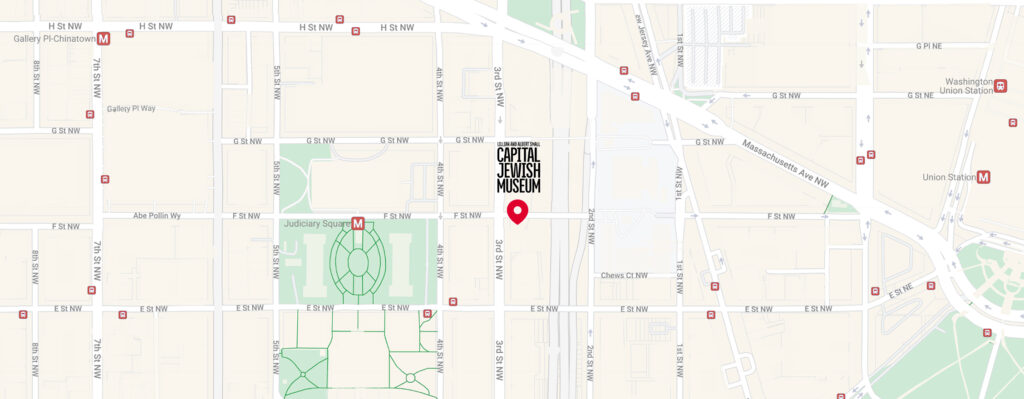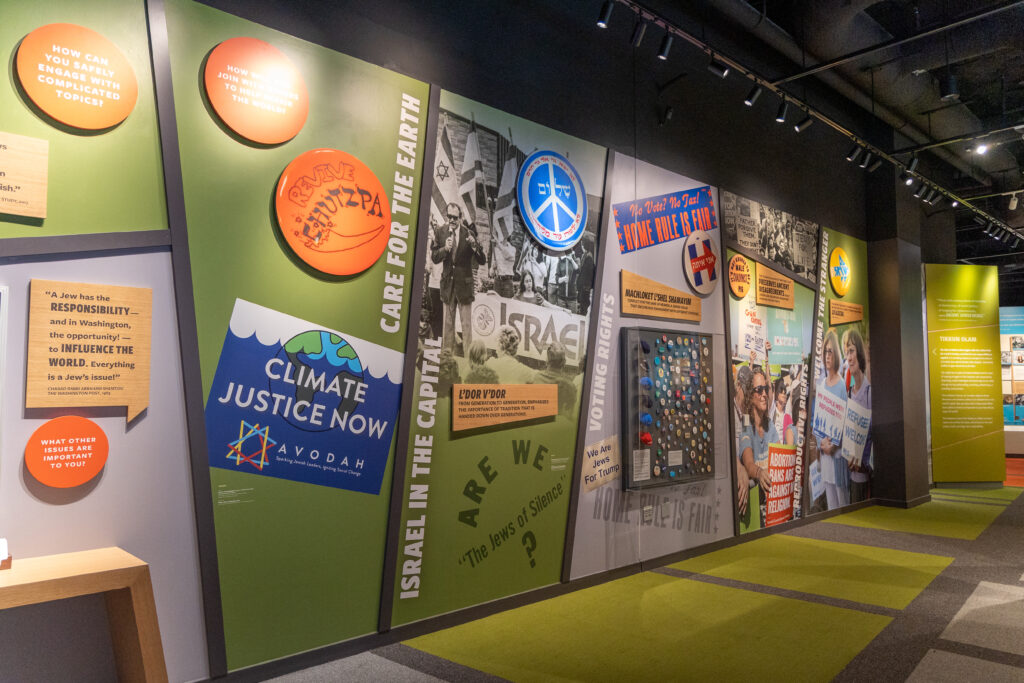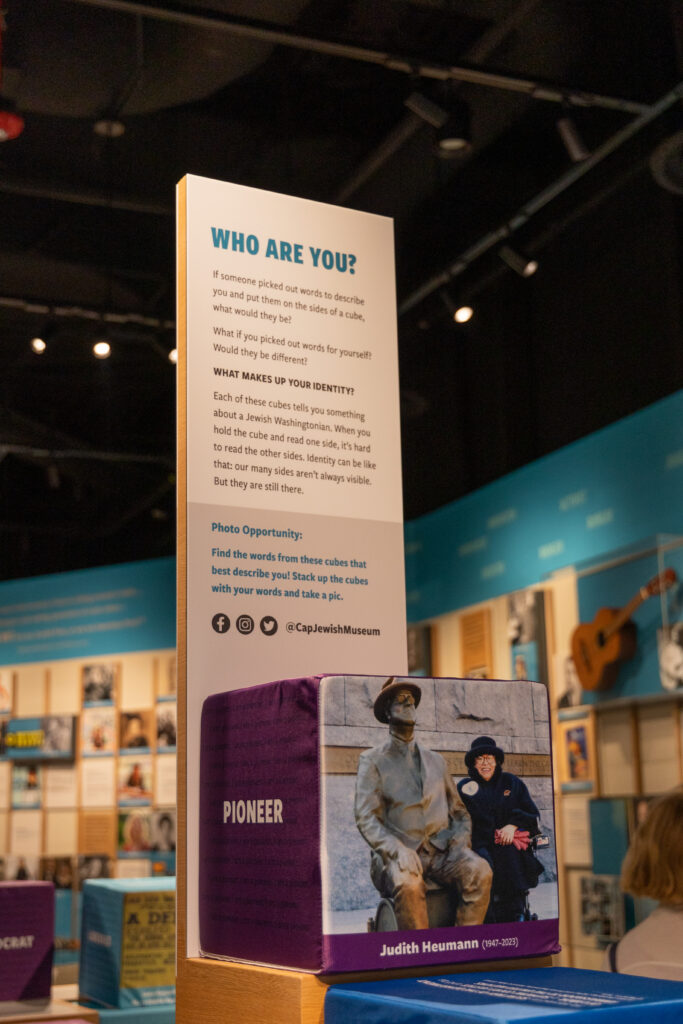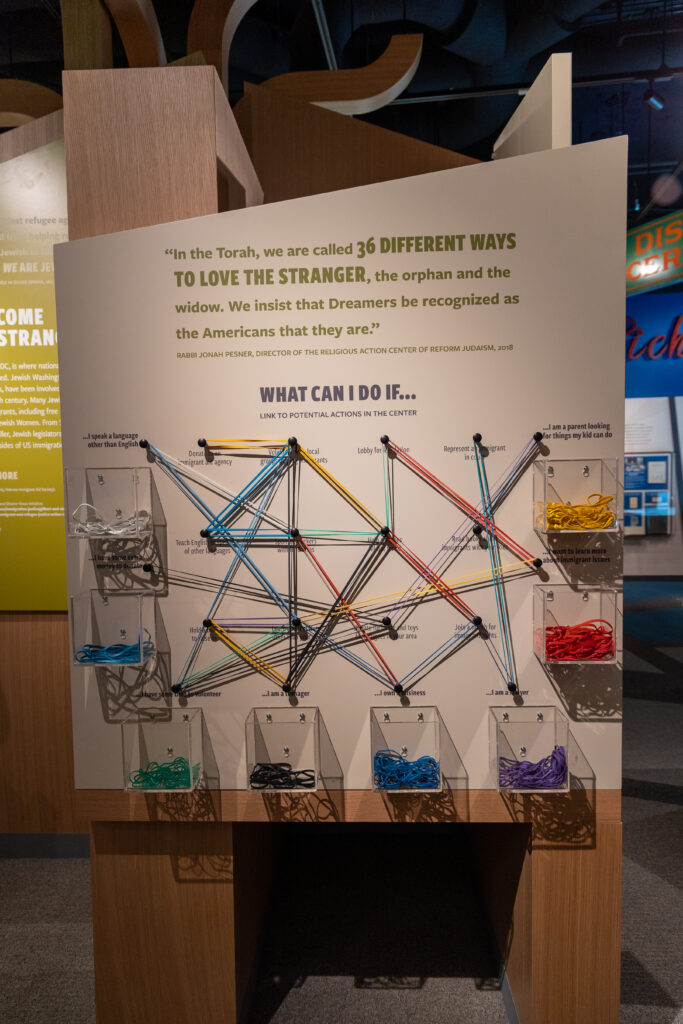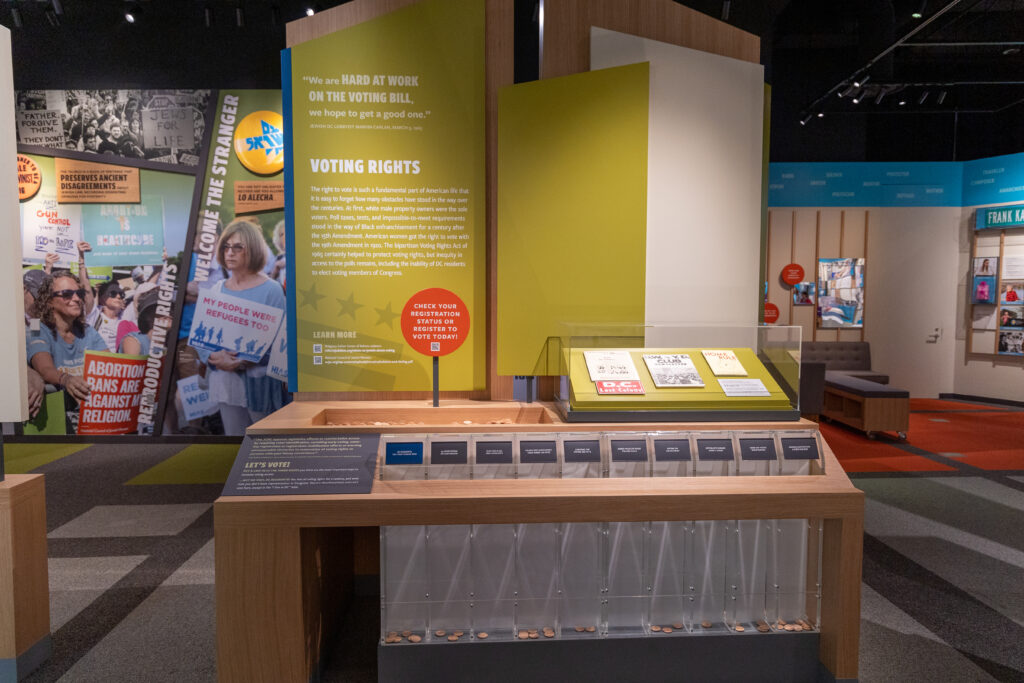When tourists flock to Washington, D.C., many of them are taking in the federal buildings along with the history of this country’s capital. But for tourists and locals alike, diving into our local history can be even more exciting, revealing, and inspiring. It would be a disservice, of course, to say that it was never disappointing. But all of it is important for people to discover, learn, and absorb all that has happened throughout the District.
An excellent way to focus on District history is the newly opened Lillian and Albert Small Capital Jewish Museum. An easy walk from the Judiciary Square Metro station, this brand-new experience is centered around the city’s first synagogue, Adas Israel, which was dedicated in 1876 at Sixth and G streets NW. The historic building would be moved three times, with its final being here at the museum at 575 3rd Street NW.
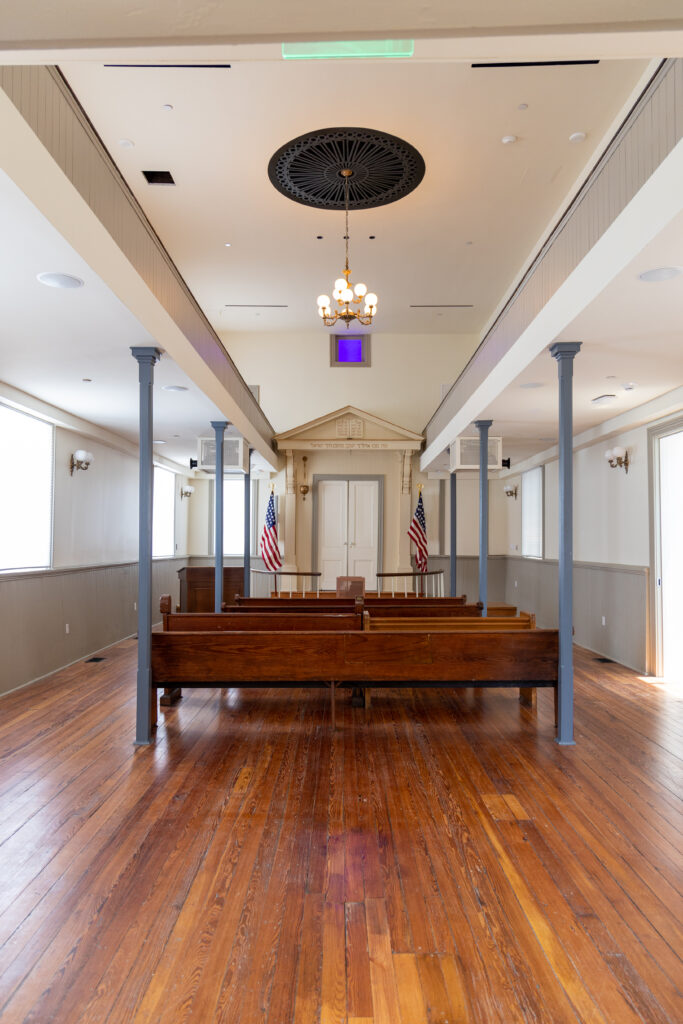
In this free museum, you can walk through the synagogue before going through the exhibits, all of which will impress with the detail provided and the interaction encouraged. You’ll learn about Jewish Washingtonians who made an impact, Jewish businesses that have been throughout the DMV, and social issues facing the world today. As Washington City Paper wrote about the museum’s opening:
“’The Jewish story is about more than the Holocaust,’ curator Sarah Leavitt tells City Paper. Instead, the Capital Jewish Museum spotlights a local lens on Jews, be it a shoemaker who served presidents, Supreme Court justices in synagogue congregations, or debates among leading economists in Jewish Community Center multipurpose rooms. It’s what curator and historian Eric Yellin likes to call ‘a capital twist’ on stories that may otherwise feel familiar.”
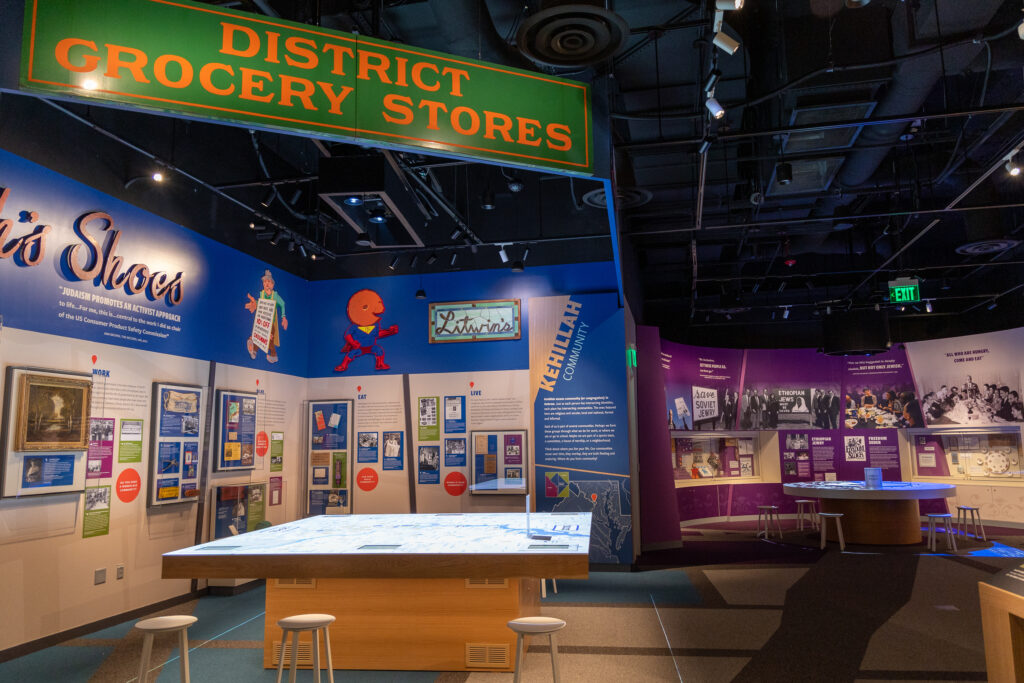
The ongoing exhibit “What Is Jewish Washington?” provides photographs, artifacts, and an interactive model to show the people and organizations that built the local community in D.C. Find out where the first Jewish family settled in 1790, how communities were formed, and all the different roles people played in the history of the city.
You’ll dive into this through the “Connect. Reflect. Act.” exhibit, with vibrant walls full of artifacts and information, large blocks you can move around that each profile an individual, and an interactive map showing the growth and movement of the Jewish community over the decades. You can learn about barriers to voting (with not-so-subtle truths about D.C. representation) and Jewish perspectives on social justice issues. And, of course, reflect on your own identity and values. Different areas call upon visitors for this, pulling you to take in what you’ve learned and consider how that affects today and the future.
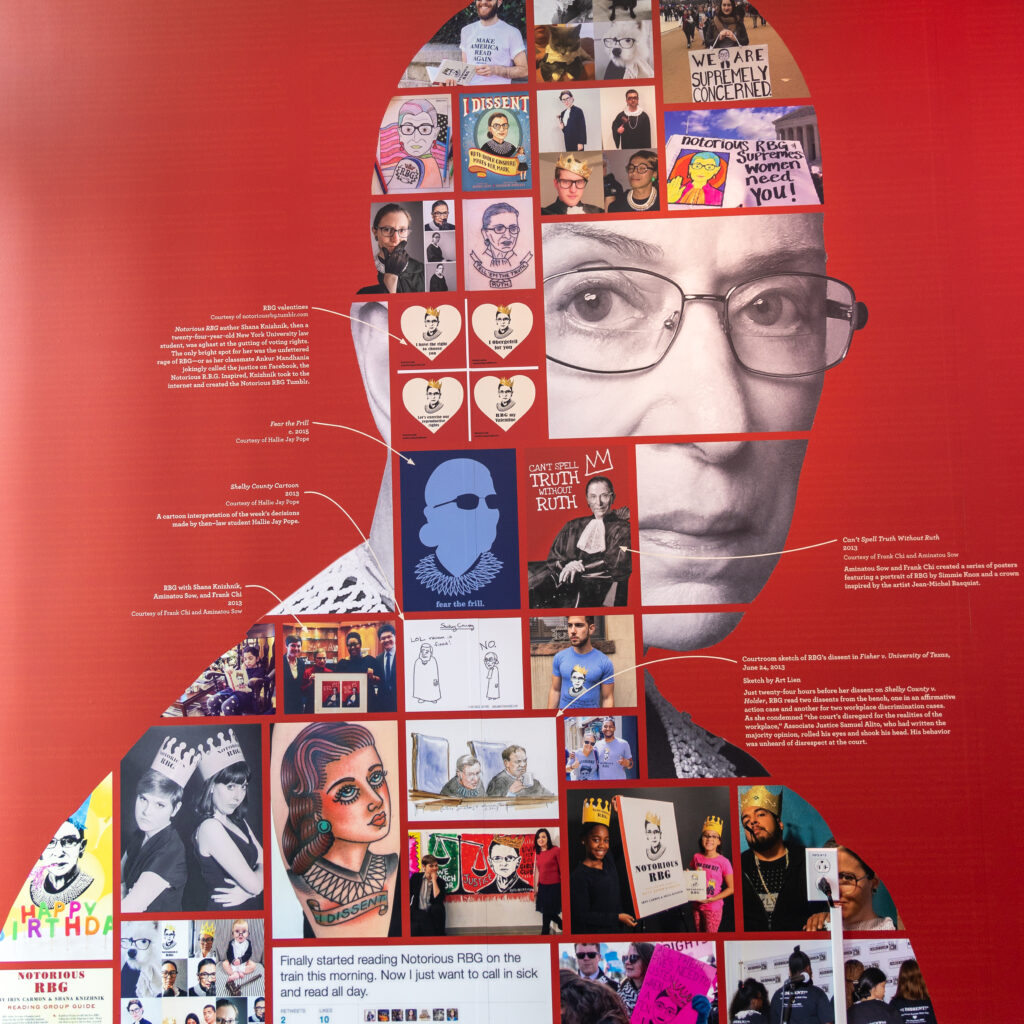
A visiting exhibition dominates the top floor, with an incredible one lasting through November 30 — “Notorious RBG: The Life and Times of Ruth Bader Ginsburg.” This exhibit gives a thorough history of the inspirational Supreme Court Justice, from her foundational experiences to the groundbreaking Supreme Court decisions where she was a fearless leader. This visiting exhibit is based on the bestselling book of the same name and created by the Skirball Cultural Center, Los Angeles, in partnership with the book’s co-authors. For the D.C. stop, the Capital Jewish Museum has added artifacts connecting Justice Ginsburg’s Jewish life in the capital.
The Capital Jewish Museum is one of those places where you’ll want to spend a good amount of time. Even then, as you reflect on it afterward, you’re bound to find yourself wanting to go back to absorb more details of this local history, which is accessible for you to do: tickets are free with reserved time tickets.
The Capital Jewish Museum is located at 575 3rd Street NW and is open from 11:00 a.m. to 8:00 p.m., Wednesday, and 11:00 a.m. to 6:00 p.m., Thursday through Sunday.
